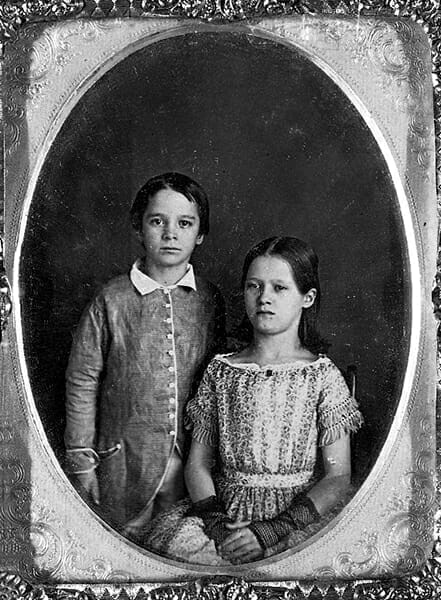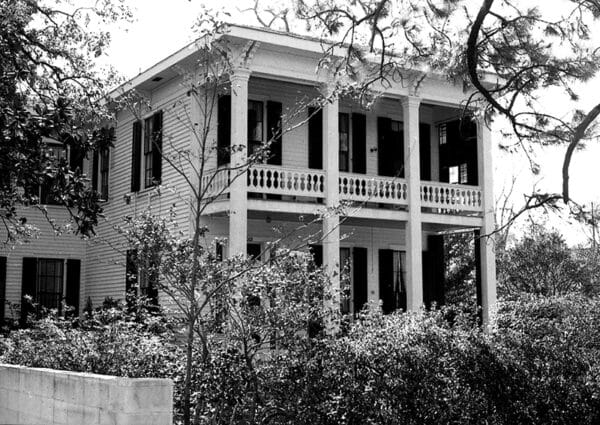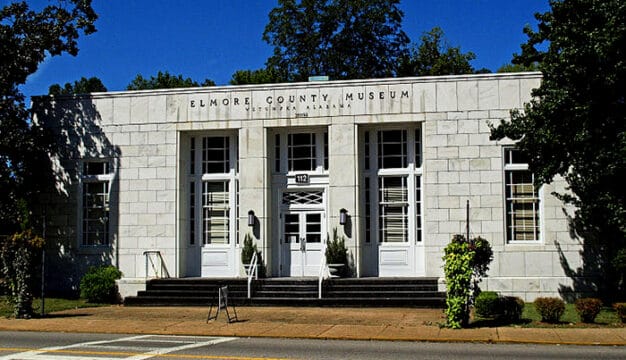Elizabeth Croom Bellamy
Elizabeth Whitfield Croom Bellamy (1837-1900) was a critically acclaimed author of poems, short stories, and novels. Unlike many post-Civil War southern writers, who focused their works on romanticizing the Old South, Bellamy instead steeped her works in the everyday experiences of contemporary people, both white and black and men and women. Her fiction tackled subjects as diverse as the plight of newly freed African Americans, the South’s reconciliation with the North, and the New South‘s movement toward diversification of agriculture and industrialization.
 Elizabeth Croom Bellamy
Elizabeth Croom was born on April 17, 1837, in Quincy, Florida. Her parents, William Whitfield Croom and Julia Stephens Croom, were descendants of prominent North Carolina families. Her father worked as a cotton commission merchant and broker. The Croom family moved from Florida to Columbus, Georgia, in 1850 so that Elizabeth and her brother, Cicero Stephens Croom, could attain a better education; Elizabeth attended the Reverend Thomas Bog Slade’s school for girls.
Elizabeth Croom Bellamy
Elizabeth Croom was born on April 17, 1837, in Quincy, Florida. Her parents, William Whitfield Croom and Julia Stephens Croom, were descendants of prominent North Carolina families. Her father worked as a cotton commission merchant and broker. The Croom family moved from Florida to Columbus, Georgia, in 1850 so that Elizabeth and her brother, Cicero Stephens Croom, could attain a better education; Elizabeth attended the Reverend Thomas Bog Slade’s school for girls.
In 1853, William Croom’s fabric business interests led him to move his family to New York City, where Elizabeth studied at the Spingler Institute, graduating in 1856. The Croom family returned to the South in 1857 after William Croom’s business failed. He bought 1,000 acres in Bolivar County, Mississippi, and established a plantation. Elizabeth lived with her parents until her marriage on May 12, 1858, to her first cousin, physician Charles Edward Bellamy. Within a year, William and Julia Croom had relocated to Eutaw, Greene County, in Alabama‘s Black Belt, and Elizabeth and her husband took over operation of the Croom plantation. In the spring of 1859, Bellamy gave birth to her first child, Bryan, and in 1861 to her second child, Elizabeth, who was called “Bessie.”
On June 17, 1862, Bryan Bellamy died of unknown causes at the age of three. Although still grieving over the loss of their child, Edward Bellamy enlisted in the Confederate Army in July 1862, soon after the outbreak of the Civil War. In December of that year, the couple’s daughter Bessie died. Edward Bellamy was promoted to surgeon in 1863, received the rank of major, and was ordered to report to Ringgold, Georgia, with the 38th Alabama Regiment. After falling ill with typhoid fever, he died on July 27, 1863.
 Stephens and Elizabeth Croom
Having lost both children and her husband in the course of a year, Elizabeth Bellamy moved to her parents’ home in Eutaw in late October 1863. To defray her parents’ financial burdens resulting from the war, she took a position teaching at the Mesopotamia Female Seminary in the town. At the end of the Civil War, the Croom family found itself in dire financial straits. Elizabeth continued to teach and, with the encouragement of her brother, Stephens, began submitting her writing for publication. Elizabeth began writing when she was a student at the Spingler Institute. Some of her school essays hinted at her future potential. “A Soiree Musicale,” written between 1854 and 1855, described the trials and tribulations of students performing a school musical. Her first published work, the poem “Patria Dolorosa,” appeared in the Mobile Sunday Times on August 26, 1866, under the byline E. W. B. The poem described the destruction of the post-Civil War South.
Stephens and Elizabeth Croom
Having lost both children and her husband in the course of a year, Elizabeth Bellamy moved to her parents’ home in Eutaw in late October 1863. To defray her parents’ financial burdens resulting from the war, she took a position teaching at the Mesopotamia Female Seminary in the town. At the end of the Civil War, the Croom family found itself in dire financial straits. Elizabeth continued to teach and, with the encouragement of her brother, Stephens, began submitting her writing for publication. Elizabeth began writing when she was a student at the Spingler Institute. Some of her school essays hinted at her future potential. “A Soiree Musicale,” written between 1854 and 1855, described the trials and tribulations of students performing a school musical. Her first published work, the poem “Patria Dolorosa,” appeared in the Mobile Sunday Times on August 26, 1866, under the byline E. W. B. The poem described the destruction of the post-Civil War South.
In 1867, Elizabeth achieved a nationwide audience when her first novel, Four Oaks, was published under the pseudonym Kamba Thorpe. The novel examines the social life of a group of quirky characters and social climbers in the fictitious community of Netherford in 1854. Although Four Oaks received praise from national literary critics, it was not a financial success for Elizabeth. She continued to write romances for the next decade, however. After a hiatus of several years, in 1884 Croom shifted her subject matter to the lives of formerly enslaved African Americans and how they dealt with their new circumstances. She also began publishing her work under her own name, producing novels, short-story collections, and short stories in national journals, including The Atlantic Monthly, Lippincott’s, and Ladies Home Journal. These literary works never provided her with financial security, however, most likely because they appeared in serial form before publication in novel form. Thus, Bellamy continued to teach to support herself. In 1868, she accepted a better teaching position in Gainesville, Sumter County, where she lived until 1877, when her brother invited her to live with him in Mobile. Although she continued to teach part-time, she was able to devote most of her time to her writing in this new living situation and began experimenting with realism and science fiction.
 Croom House in Mobile, 1979
In 1884, Stephens Croom died at age 45, leaving his young son and wife, Mary Marshall Croom, without any means of financial support. Elizabeth was forced to return to teaching full time, and soon she and her sister-in-law opened a school in their home. Elizabeth continued to publish and gave lectures on literary topics such as Shakespeare, bringing in some additional money.
Croom House in Mobile, 1979
In 1884, Stephens Croom died at age 45, leaving his young son and wife, Mary Marshall Croom, without any means of financial support. Elizabeth was forced to return to teaching full time, and soon she and her sister-in-law opened a school in their home. Elizabeth continued to publish and gave lectures on literary topics such as Shakespeare, bringing in some additional money.
Elizabeth developed Bright’s Disease, a form of chronic kidney failure, in 1893. She continued to write, although her health deteriorated over the next seven years. She died on April 13, 1900, and was buried in Magnolia Cemetery in Mobile.
Selected Works by Elizabeth Croom Bellamy
Published as Kamba Thorpe
Four Oaks (1867)
Transition (1868)
Barbara’s Folly (1873)
The Memorable Trip (1875)
A Woman’s Work (1876)
The Little Joanna (1876)
The Master’s Daughter (1878)
Published under Elizabeth W. Bellamy
At Bent’s Hotel (1884)
Old Man Gilbert (1888)
Penny Lancaster, Farmer (1889)
Doctor Bob (1889)
Easter Sunshine (1892)
The Luck of the Pendennings (1895)
Ely’s Automatic Housemaid (1899)
Further Reading
- Donaldson, Anthony. “A Guide to the Velma and Stephens G. Croom Collection.” Mobile: The Doy Leale McCall Rare Book and Manuscript Library, 1999.
- MacInerney, Dorothy M. “Elizabeth Whitfield Croom Bellamy: The Life and Works of a Southern Belle.” Ph.D. dissertation, University of Texas at Austin, 1996.
- Williams, Benjamin Buford. A Literary History of Alabama: The Nineteenth Century. Rutherford, N.J.: Fairleigh Dickenson University Press, 1979.



